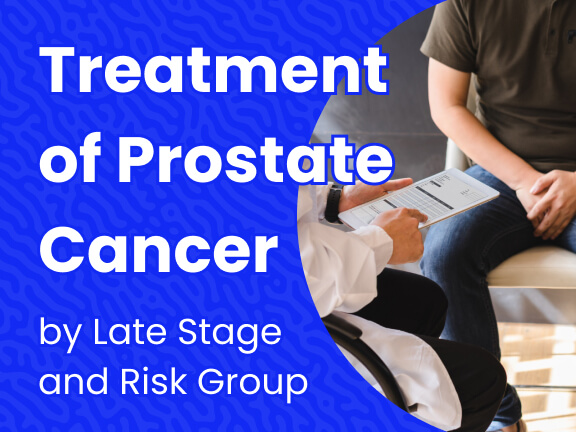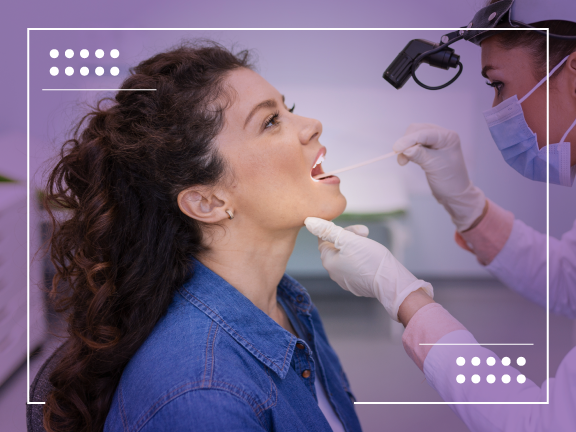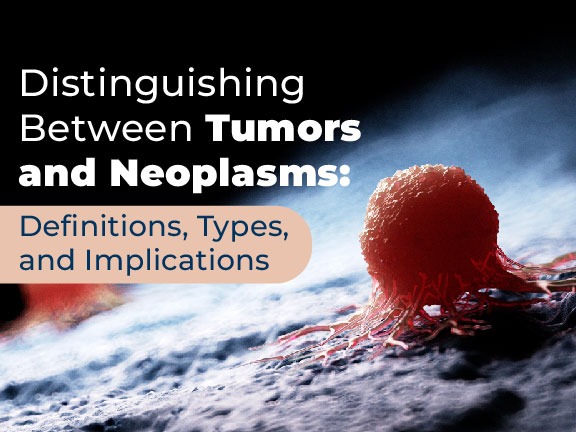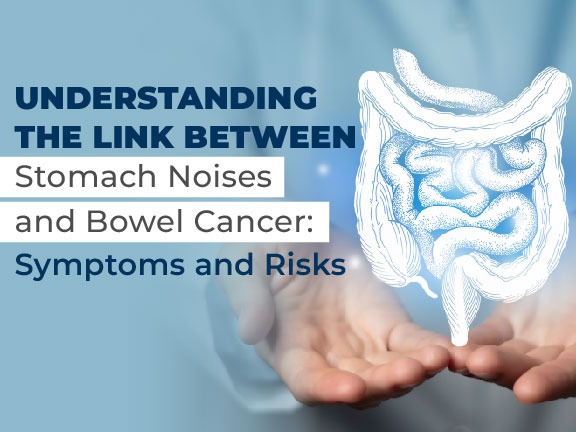Treatment options for prostate cancer are based on its stage, a patient’s life expectancy, and other factors. Learn the details of prostate cancer by stage and risk groups.
The stage of your prostate cancer is one of the most important factors in choosing the best way to treat it. Prostate cancer is staged based on the extent (how much the cancer has spread) of the cancer (using T, N, and M categories), the PSA level, and Gleason score (Grade Group) when it is first diagnosed.
For prostate cancers that haven’t spread (stages I to III), doctors also use risk groups (based on how far the prostate tumor has grown, PSA level, grade group, and prostate biopsy results) to help determine if more tests should be done and to help guide treatment options. Risk groups range from very-low-risk to very-high-risk, with cancers in the lower risk groups having a smaller chance of growing and spreading compared to those in higher risk groups.
Other factors, such as your age, overall health, life expectancy, and personal preferences are also considered when looking at treatment options. In fact, many doctors determine a man’s possible treatment options based not just on the stage, but on the risk of cancer coming back (recurrence) after the initial treatment and on the man’s life expectancy.
High Risk Group
Prostate cancers in the high-risk group have grown outside the prostate (cT3a) OR have a grade group of 4 or 5 (Gleason score 8 to 10) OR have a PSA level of more than 20.
People with cancer in this group might be offered:
- Radiation therapy along with androgen deprivation therapy (ADT) for 1 to 3 years.
- Radical prostatectomy with PLND. If cancer is found in the lymph nodes taken during surgery, ADT with or without external beam radiation treatment might be given. Radiation therapy with or without ADT might be recommended if the cancer is not found in the lymph nodes but does have features that make it more likely to recur. In some cases, instead of radiation or ADT therapy, watching the PSA closely after surgery might be considered with the plan to give ADT or radiation treatment when the PSA level rises.
For men with other serious health problems and symptoms from their prostate cancer, ADT alone might be a good choice. For men with no symptoms from the cancer and who have major health issues, ADT alone, external beam radiation therapy alone, or observation are options.
Very-High-Risk Group

Prostate cancers that are in the very-high-risk group (very high risk for the tumor growing, coming back, or spreading to the nearby lymph nodes) have one or more of the following traits:
- The tumor has spread to the seminal vesicles (cT3b) or into other tissues next to the prostate (cT4)
- The biopsy tissue shows areas with a Gleason 5 pattern (Gleason score 9 or 10 or grade group 5)
- They have 2 or 3 of the features found in the high-risk group (see above)
- More than 4 biopsy pieces are grade group 4 or 5 (Gleason score 8 to 10)
Treatment options for people in this group include:
- External beam radiation therapy (with or without brachytherapy) along with ADT for 2 years. Sometimes, the chemotherapy drug docetaxel or the hormone drug abiraterone might be added to radiation plus ADT.
- Radical prostatectomy with PLND (especially for younger men). If cancer is found in the lymph nodes taken during surgery, ADT with or without external beam radiation treatment might be given. Radiation therapy with or without ADT might be recommended if the cancer is not found in the lymph nodes but does have features that make it more likely to come back (recur). In some cases, instead of radiation or ADT therapy, watching the PSA level closely after surgery might be done with the plan to give ADT or radiation treatment when the PSA level rises.
For men with no symptoms from the cancer but who have major health issues, treatment options include ADT alone, external beam radiation therapy alone, or observation.
Stage 4A
Stage 4A cancers have spread to nearby lymph nodes but not too distant sites. For men who are healthy enough to get treatment or have symptoms from the cancer, options include:
- External beam radiation treatment with ADT (with or without abiraterone)
- ADT with or without abiraterone
- Radical prostatectomy with PLND. If cancer is found in the lymph nodes taken during surgery, ADT with or without external beam radiation treatment might be given. If the cancer is not found in the lymph nodes but does have features that make it more likely to come back (recur), then external beam radiation therapy with or without ADT might be recommended. In some cases, instead of radiation or ADT therapy, watching the PSA closely after surgery might be done with the plan to give ADT or radiation treatment when the PSA level starts to go up.
For men with Stage 4A cancer without symptoms or with other serious health problems, observation or ADT alone might be recommended.
Stage 4B
Stage 4B cancers have spread to distant organs such as the bones. Most stage 4B cancers can’t be cured but are treatable. The goals of treatment are to keep the cancer under control for as long as possible and to improve a man’s quality of life.
Initial treatment options may include:
- ADT with abiraterone
- ADT with apalutamide
- ADT with chemotherapy, specifically docetaxel
- ADT with enzalutamide
- ADT with external beam radiation to the tumor in the prostate
- ADT alone
- Surgery (TURP) to relieve symptoms such as bleeding or urinary obstruction
- Treatments aimed at bone metastases, such as denosumab (Xgeva), a bisphosphonate like zoledronic acid (Zometa), external radiation aimed at bones, or a radiopharmaceutical such as radium-223, strontium-89, or samarium-153
- Observation (for those who are older or have other serious health issues and do not have major symptoms from the cancer)
- Participating in a clinical trial with newer therapies or drug combinations
Treatment of stage 4 prostate cancer may also include palliative treatments to help prevent or relieve symptoms such as pain.
Thinking About Taking Part in a Clinical Trial?

Prostate cancer clinical trials offer access to new, innovative treatments that are not widely available but go through strict, FDA-approved regulatory processes before being approved for use. Clinical trials are one way to get state-of-the-art cancer treatment, and in some cases, they may be the only way to get access to newer treatments. They are also the best way for doctors to learn better methods to treat cancer. Massive Bio guides patients through the most comprehensive clinical trial matching process using our AI-Powered system.
If you’ve been diagnosed with any of the following prostate cancer subtypes, we’re here to help:
- Adenocarcinoma
- Transitional Cell Carcinoma
- Small Cell Carcinoma
If you do not know which type of prostate cancer you have, that is okay. Additional testing can help you determine your exact diagnosis.
Sources:









































